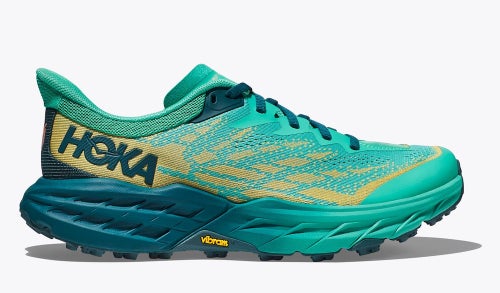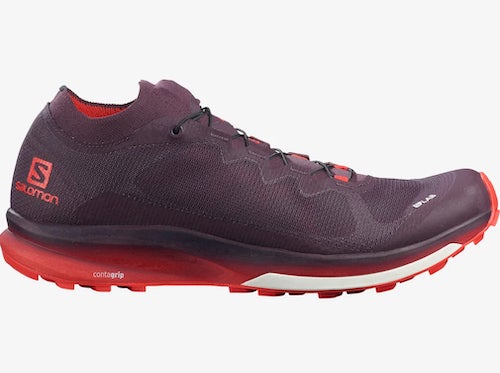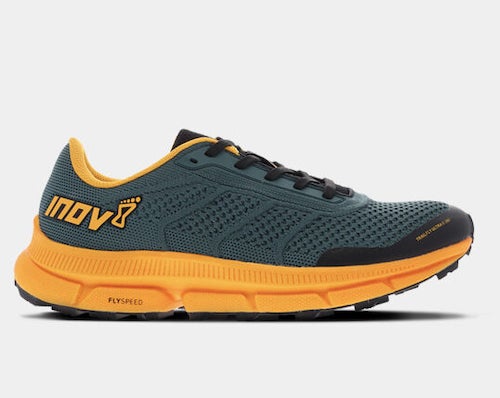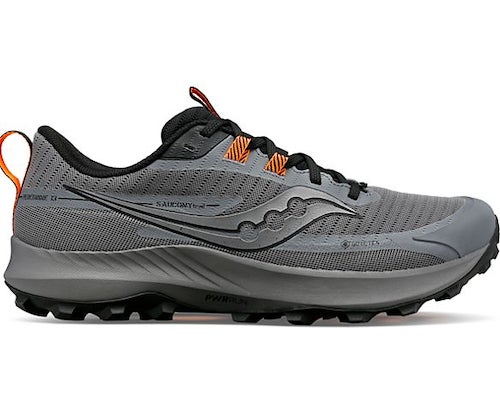New perk! Get after it with local recommendations just for you. Discover nearby events, routes out your door, and hidden gems when you sign up for the Local Running Drop.
Any chef worth their salt will have more than one knife in their kitchen. Any experienced surfer has a stack of boards in the garage, able to meet any wave forecast. Likewise, experienced runners often have a “quiver” of running shoes: a varied collection of footwear that meets specific demands of terrain, run length, speed, and weather of a particular run. Someone logging huge miles for an iron-distance event would probably wear a different pair for their 15-mile long run than they would for track day.
We know: Keep it simple. Owning too many pairs of shoes contributes more to excessive consumerism and an environmental impact that has consequences. To own even one respectable pair of running shoes is a gift we’ll never entirely take for granted.
But having more than one pair of shoes also has its benefits. Mixing up the drop and cushion in shoes can reduce the risk of overuse injuries like plantar fasciitis. Rotating different models is, in fact, one of the few proven ways that shoes can reduce injury. It can help alleviate hot spots caused by repeated friction from a single pair of shoes.
So when it comes to mixing it up, to being prepared for whatever the day’s trail or road conditions might bring, our editors have a few kicks they keep in heavy rotation.

Zoë Rom, Trail Runner Editor in Chief
Trail Shoe #1: Hoka Speedgoat 5 ($155)
This is my go-to for long days on the trail. While I’ve longed to see the return of the discontinued Speedgoat Evo, the newest update to the Speedgoat is less sloppy and more responsive than its predecessors. If I had to pick, this would probably be my “desert island” shoe. (First Look: Hoka Speedgoat 5)
Trail Shoe #2: Hoka TectonX ($160)
I love the balance of propulsion and stability in the TectonX. It integrates Hoka’s classic max cush approach with a sporty, parallel plate for extra propulsion and kick during runs. While this shoe is fantastic in faster, flat terrain, it’s not ideal for super techy descents or days with a higher ratio of power-hiking. (Editor’s Choice: Hoka Tecton X Trail Running Shoes)
Trail Shoe #3: The North Face Summit Vectiv Pro ($250)
This one is new to my quiver, but I’m so excited to put even more miles on this shoe. It’s propulsive but more stable than previous Vectiv models in TNF’s offerings and is fun for trail-bound speedwork and faster efforts. To me, this shoe offers the closest analog for a true supershoe experience on the trails. (FIRST LOOK: The North Face Summit Vectiv Pro, Reviewed)
Road Shoe #1: Saucony Endorphin Speed 3 ($170)
This shoe has been my daily driver for most of my winter training. A winged nylon plate adds a little extra pep for long winter miles without going all-out on an explosive, carbon plate. I particularly like these on days when I feel like my turnover could use a bit of an extra boost.
Road Shoe #2: Hoka Rincon 3 ($125)
Super light and with just enough cushion to provide a super soft ride, the Rincon is a go-to for long runs and lower-output days when I don’t want to go full-squish. It’s the perfect combination of sporty and soft, with just enough responsiveness to push against for a couple of hill repeats.
Road Shoe #3: New Balance FuelCell Supercomp Trainer ($180)
This is my go-to for uptempo long runs and speed sessions. It’s peppy enough to be really fun for faster days, but isn’t an all-out comp shoe, and has stood up to some serious winter mileage. I do wish I had sized up one half-size in these, but I always look forward to a long run in these speedsters.

Nicholas Triolo, Senior Editor, Outside Run and Trail Runner
Trail Shoe #1: Salomon S/Lab Ultra 3 ($180)
I first saw these on the feet of royalty (otherwise known as Courtney Dauwalter). After hearing high marks about this shoe from several credible sources, I picked up a pair and have used them for many weekday miles, as well as longer efforts like the 150+ mile, 8-day TransAlpine and the 12-hour Running up for Air run. With the trend toward larger, more cushioned shoes for ultra-distances, I find these shoes to be refreshingly trim on the build and midsole, while somehow still offering serious, long-haul protection. The Contragrip outsole offers bite for tread but nothing too aggressive. There’s really nothing I don’t like about these shoes.
Trail Shoe #2: Adidas Terrex Speed Ultra ($160)
Living in Missoula, Montana, I’m blessed with having several trailheads within two miles of my door. I usually run to the trail, which requires that I first have to cover some asphalt in the approach, so often I’ll select a shoe that’ll do it all, a hybrid. For that reason, I probably reach for my Speed Ultras more than any other daily shoe. At 8.6 ounces, they’re lightweight, but still offer great support and have a perfect cut. Also, the price-to-performance ratio is about as good as it gets, and they just look fresh.
RELATED: Let’s Get Promiscuous With Our Running
Road Shoe #1 and #2: Adidas Adios 7 ($130) and Adios Pro 3 ($250)
So I cheated. Two shoes, one arrow. But the arrow is called the Adios, and I’ve been a loyal Adios lover for over a decade. I find the Adios 7 to be a great trainer for weekly miles. These shoes last forever. The Adios Pro 3 is best for those faster speed sessions and road races. Both make me feel sort of like a superhero when I put them on. Here are the main differences: The Adios 7 is a more economical choice (though still high performance) with a combination of Lightstrike and Lightstrike Pro foam underfoot, and it weighs 7.7 ounces. The Adios Pro 3s have carbon-infused Energyrods to speed the foot forward, full Lightstrike Pro cushioning (Adidas’s finest), and they weigh a touch heavier than the Adios 7, at 8.1 ounces, though you wouldn’t know it. Mixing metaphors on purpose: Both shoes are top-shelf quiver gods.
Road Shoe #3: Saucony Tempus ($160)
After being an early adopter of Saucony’s trail shoes, I’d lost track of Saucony and their offerings for several years. Last year, I picked up a pair of the Tempus and was blown away. Full transparency: I didn’t even know they were considered “stability” shoes, I just knew they made my feet happy for miles, and hours, at a time. The full length, ultralight PWRRUN PB superfoam, surrounded by a clever frame of firm PWRRUN, delivers bounce (but not too much; I generally like my shoes firm) and tucks in under 9 ounces. I find myself reaching for these for more runs than I care to admit. (Is the Saucony Tempus the Future of Stability Shoes?)

Brian Metzler, Contributing Editor
For as long as I’ve been a runner, I’ve always appreciated a quiver with multiple shoes in it because of how uniquely different they feel at different paces and on different types of terrain. It started when I was a young trackster, when I had a pair of track spikes, a performance training shoe, and a cushier recovery shoe close at hand. Now as someone who mostly (but not always) runs trails, I always have several pairs of trail running shoes in my quiver, plus a couple pairs of road shoes.
Trail Shoe #1: Inov-8 Trailfly Ultra G 280 ($185)
This was one of my favorite trail shoes of 2022 and it’s just about at the end of its shelf life so I should start looking for another pair. It has a springy, nitrogen-infused, high-rebound foam midsole and has a stable, energetic vibe and grippy outsole allowing it to tackle all types of terrain without limitation. (REVIEW: Inov-8 Trailfly Ultra G 280)
Trail Shoe #2: Norda 001 G+ Spike ($265)
It’s been a pretty cold and snowy winter in Colorado, and that’s had me lacing up this spike-infused shoe at least 20 times since mid-December. It’s a winterized version of its cushy, grippy trail shoe, only with 10 carbide steel spikes embedded in the outsole for optimal grip on icy, snowy, slushy surfaces. (The Running Shoe You Need If You’re Heading Out On Icy Trails)
Trail Shoe #3: Saucony Peregrine 12 ($130)
I almost always have a pair of Peregrines in my tool box (a.k.a. my truck), because it’s a great do-everything shoe that can tackle a wide range of terrain from smooth dirt trails to moderately rocky routes and even dirt and gravel roads. Light, agile, grippy, and fun!
Road Shoe #1: Saucony Endorphin Speed 3 ($170)
This is certainly one of my favorite shoes of all-time—and that says a lot—because it’s light enough to run fast, cushy enough to run long and nimble and comfortable enough for just about any kind of road or track running I’ll do all year.
Road Shoe #2: Atreyu Daily Trainer ($110)
Atreyu is a small indie brand that makes high-quality shoes at a low-budget price. I’ve just started running in the Daily Trainer, which is kind of a morphed version of its Base Model and Base Trail—light, agile, and responsive with just enough grip where the rubber meets the road.
Jonathan Beverly, Senior Running Editor, Gear
Trail Shoe #1: Saucony Peregrine 13 GTX ($160)
The Peregrine has been a long-time favorite—a shoe that rides the line between minimalist and cushioned with aplomb, providing enough protection to wear any day on almost any trail, while never getting in the way. The 13th edition doesn’t disappoint, and the GTX version, which is only slightly less supple in its secure foothold, has been my friend during this endless winter when every day I’m either crunching through snow drifts or splashing through mud puddles.
Trail Shoe #2: Xero Mesa Trail II ($120)
I don’t go minimal every day, but when I do I’ve been reaching for these über-comfortable trail moccasins. The fit is exceptional, hugging my midfoot securely while letting my forefoot splay and my arches do their thing without interference. They’ve got a hint of padding, enough to take the sting off the bony protrusions underfoot, while being thin and flexible enough to feel the terrain, which makes me want to dance lightly across the prairie.
Trail Shoe #3: Brooks Caldera 6 ($150)
I’m not a fan of many maximalist models either, but I do take variety in footwear seriously, and I’ve learned to love the ride of Brooks’ 39mm-high Caldera for days when I want a little coddling. What redeems them for me is the nitrogen-infused DNA Loft v3 that pushes back quickly upon compression, so I don’t feel like I’m slogging in sand. Add a wide base, cockpit-like contouring around the foot, a moderate six-millimeter drop, and an upper that locks my foot in place, and I feel secure and oh-so-smooth on days when I want to put some miles in without thinking about the ground or my shoes.
Road Shoe #1: Altra Rivera 3 ($140)
Altra added two millimeters of bouncy AltraEGO foam to the midsole in this update, and they made a shoe I liked into one I love. I like the clean lines and smooth, simple ride of the first version, but it felt a little close to the ground if I wore it too many days in a row (which I wanted to). The new height feels significantly more protective, especially when I roll only my forefoot, while not getting squishy: it just feels right and lets me relax and run. The flexible, open mesh upper works well with the slimmer fit of this model. The shoes feel fast, moving with my foot through the stride without the threat of slipping around inside, but it’s still foot-shaped, so my toes can splay and engage naturally. The Rivera makes me stride better, taller, more balanced, with a quicker cadence: I get back home from runs feeling fresh and alive.
Road Shoe #2: Saucony Endorphin Speed 3 ($170)
Saucony got the semi-super shoe right from the beginning, so much so that the Endorphin Speed has become the benchmark for other brands venturing into the category. I put a lot of miles on the first version, in the beginning of the pandemic, loving the peppy ride that felt good at any pace but made going fast even more fun. Now on v3, they’ve kept the winning combination of top-end pebax-based foam with a flexible, accommodating plate. That plate now has “wings” along the midfoot which combine with a wider foam platform to make the ride more stable and suitable for even more runs, from recovery days to V02 max intervals.
Road Shoe #3: Skechers Razor 4 ($145)
The Razor 4 makes me smile. Every step feels soft as you land and roll onto the new TPU-based foam. Then it’s quickly firm and you’re rolling off the toe before you knew you were even on the ground. I called it the best Skechers ever, and that’s saying a lot from a brand I’ve enjoyed since they started making performance running shoes. I wear these whenever I feel like cruising at that magical pace where I’m feeling fast but not getting tired.
Road and Trail Shoe # 4, #5, #6 … or Whatever the UPS Man Brings
After testing nearly every shoe that has come out this century, my biggest conclusion is that there are a lot of good shoes and very few bad ones. The variety of rides and fit are endlessly fascinating, and even now, with an aging, compromised stride, I can appreciate the differences and enjoy how each reveals the road or trail, and changes how I interact with the earth beneath my feet. My quiver changes each week, and my favorites would be different if you asked me tomorrow. So don’t get stuck on a brand or a style: variety is not only good for your physical health but it makes each run more fun as well.